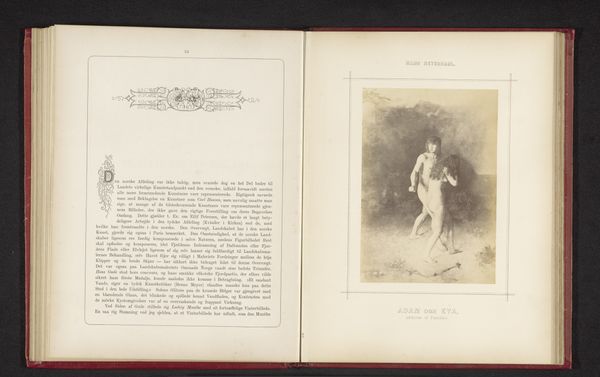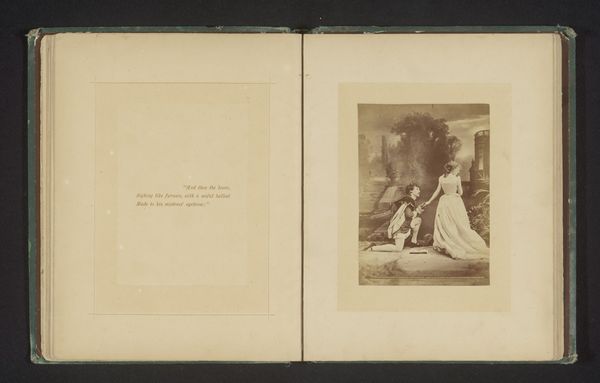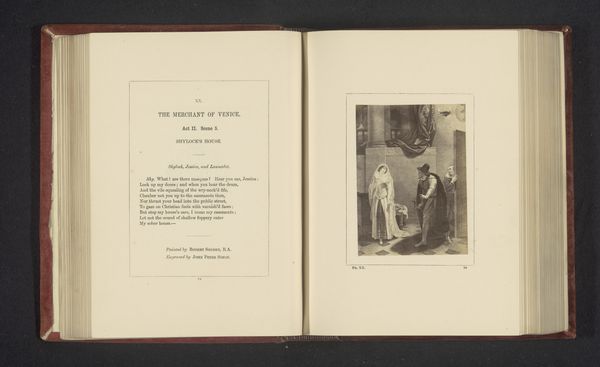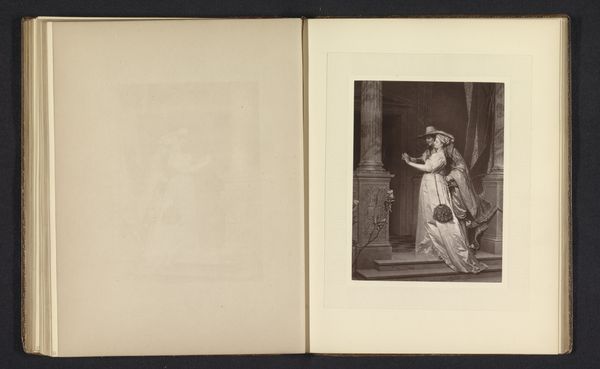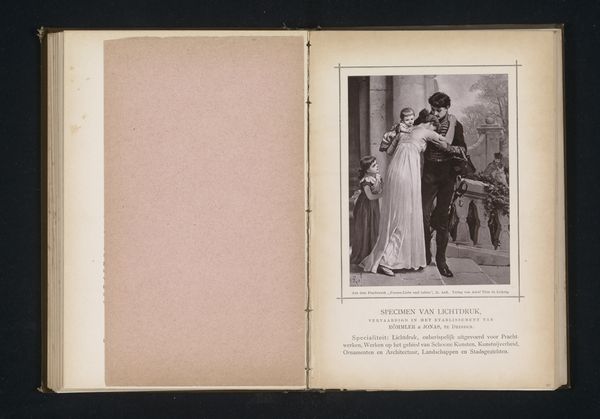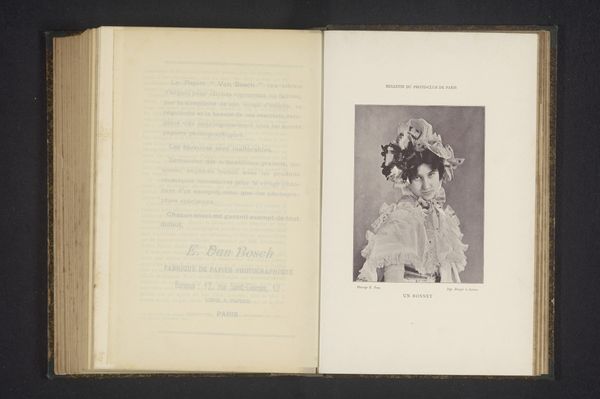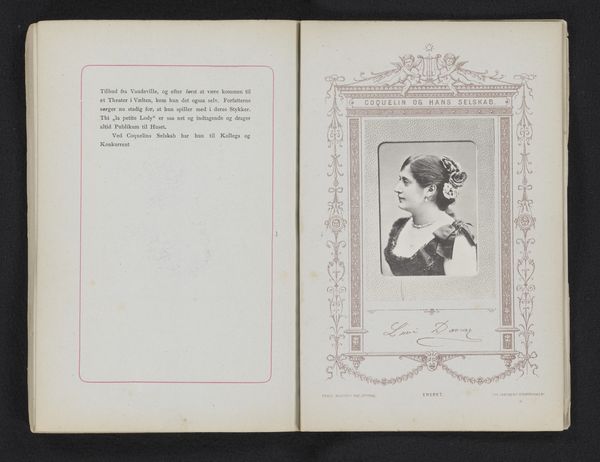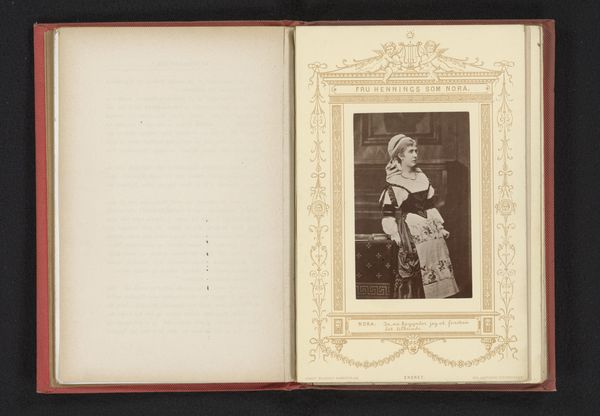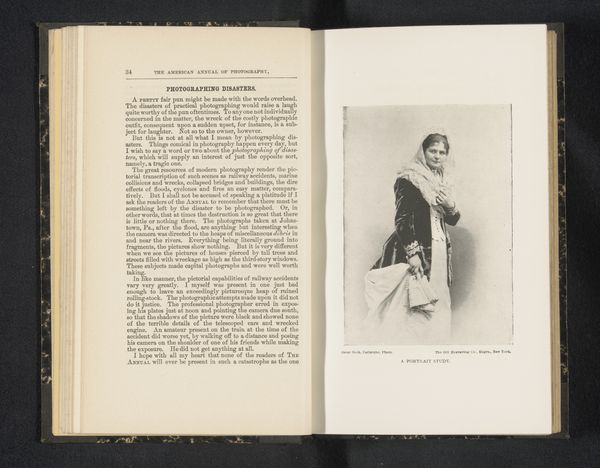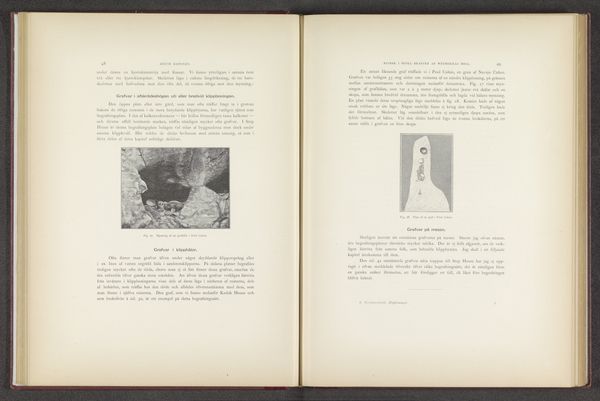
Fotoreproductie van een schilderij van een vrouw met een kind op schoot door Albert Edelfelt before 1878
0:00
0:00
print, photography
#
portrait
# print
#
impressionism
#
photography
#
genre-painting
Dimensions: height 140 mm, width 105 mm
Copyright: Rijks Museum: Open Domain
Curator: Here we have a photographic reproduction of a painting created before 1878 by Albert Edelfelt, displaying a genre scene rendered in an impressionistic style. It is of a woman holding a child in her lap. Editor: The sepia tones and soft focus create an undeniably nostalgic atmosphere. One immediately thinks of the idealized mother-and-child theme that pervades Western art. Curator: Indeed, observe how Edelfelt employs light and shadow to draw the eye towards the central figures. The composition uses diagonal lines, creating a sense of dynamism, even in a quiet, intimate scene. Note the precise rendering of details, yet overall it is an almost dream-like clarity. Editor: But what was the purpose of reproducing this image? Is it simply about broader access, or does the photograph imbue the painted image with a different sense of "truth" or authenticity? Also, I'm curious about the labor and skill of the person who created this print; their efforts deserve attention. Curator: A vital point, given the medium. The print transforms the original painting, becoming a tangible object, distributed more easily, reaching a broader audience and shaping the reception of Edelfelt's artistic vision. We cannot separate the photographic rendition from our experience of the represented painting. Editor: Absolutely. And to consider the subject further: What does this sentimental image say about prevailing notions of domesticity and femininity in the 19th century? There are implicit messages about women’s roles, even if it’s packaged within a seemingly simple mother-child moment. Curator: This print serves as a lens through which we can explore not only the aesthetics of Impressionism but also the broader social and cultural context. Its function is multilayered, offering glimpses into the artistic tastes of the time and the means by which images were disseminated and consumed. Editor: It makes you wonder about its circulation: who owned the original artwork and who had access to photographic reproductions like these? We could study those consumer habits. The layered material history certainly changes the impression. Curator: By closely examining this work’s multiple lives through a formalist analysis and then layering its material journey and broader social echoes, we can enrich and broaden our understanding of the represented subject matter. Editor: True. Every element involved contributes, and recognizing it as a photograph adds new dimensions to appreciate its original state as well as it representation here as print.
Comments
No comments
Be the first to comment and join the conversation on the ultimate creative platform.
